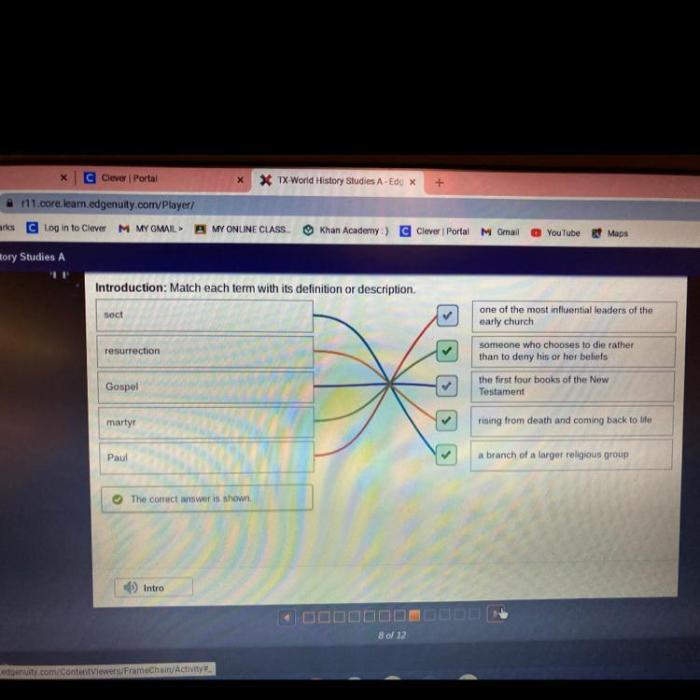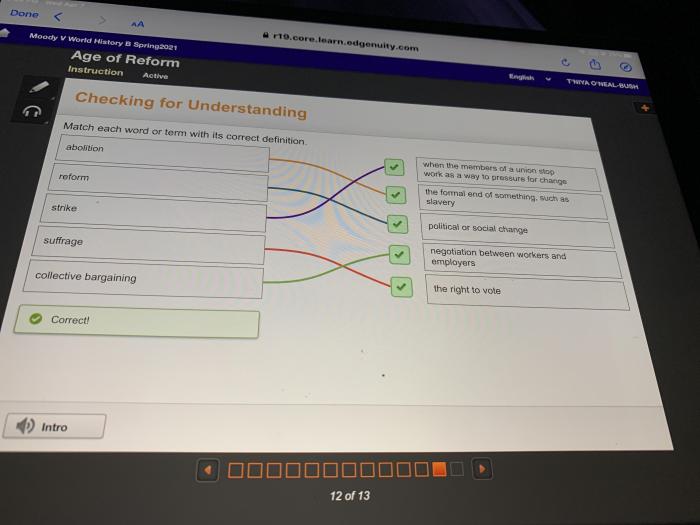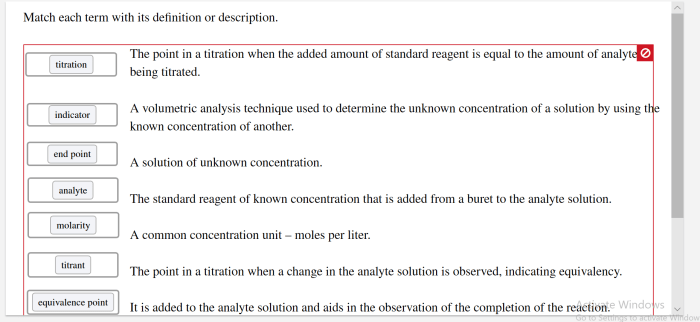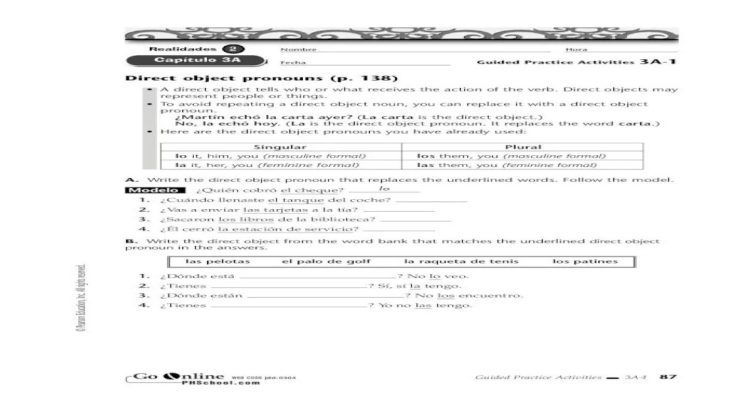Match each term with its definition – Matching each term with its definition is a fundamental activity that plays a vital role in enhancing vocabulary, comprehension, and critical thinking skills. This guide delves into the concept of matching exercises, exploring their types, benefits, and effective creation techniques, providing educators and learners with a comprehensive understanding of this valuable pedagogical tool.
Matching exercises involve pairing terms with their corresponding definitions, promoting active recall and knowledge retention. They are widely employed in various educational contexts, including science, history, and language learning, fostering a deeper understanding of subject matter.
Definition Matching

Matching terms with their definitions is a fundamental educational activity that enhances vocabulary, comprehension, and critical thinking skills. It involves presenting learners with a list of terms and their corresponding definitions and asking them to correctly pair each term with its definition.
Types of Matching Exercises
There are several types of matching exercises, each with its unique characteristics:
- Simple Matching:This involves matching a list of terms with a corresponding list of definitions, where each term has only one correct match.
- Multiple-Choice Matching:This presents learners with multiple choices for each definition, requiring them to select the correct match from the options provided.
- True/False Matching:This type of exercise requires learners to determine whether a given definition is true or false for each term.
Creating Matching Exercises, Match each term with its definition
To create effective matching exercises, consider the following guidelines:
- Select Appropriate Terms and Definitions:Choose terms and definitions that are relevant to the topic and appropriate for the learners’ level of understanding.
- Ensure Clarity and Precision in Wording:Terms and definitions should be clearly and concisely worded to avoid confusion.
- Organize the Exercise for Ease of Use:Present the terms and definitions in a logical order or group related terms together.
Benefits of Matching Exercises
Matching exercises offer numerous benefits for learners:
- Improving Vocabulary and Comprehension:Matching terms with their definitions helps learners expand their vocabulary and enhance their understanding of key concepts.
- Enhancing Critical Thinking Skills:Matching exercises require learners to analyze and compare terms and definitions, fostering critical thinking and problem-solving abilities.
- Assessing Knowledge and Understanding:Matching exercises can be used as formative or summative assessments to evaluate learners’ knowledge and understanding of a topic.
Examples and Applications
Matching exercises are widely used in various subjects and educational settings:
- Science:Matching scientific terms with their definitions helps students build a strong foundation in scientific vocabulary and concepts.
- History:Matching historical events with their dates enhances students’ understanding of historical timelines and key events.
- Language:Matching vocabulary words with their meanings improves students’ comprehension and communication skills.
Query Resolution: Match Each Term With Its Definition
What is the primary purpose of matching exercises?
Matching exercises aim to enhance vocabulary, comprehension, critical thinking, and knowledge assessment by actively engaging learners in the process of pairing terms with their corresponding definitions.
What are the different types of matching exercises?
There are various types of matching exercises, including simple matching, multiple-choice matching, and true/false matching, each offering unique benefits and catering to specific learning objectives.
How can I create effective matching exercises?
To create effective matching exercises, it is crucial to select appropriate terms and definitions, ensure clarity and precision in wording, and organize the exercise for ease of use, considering the learning objectives and target audience.




